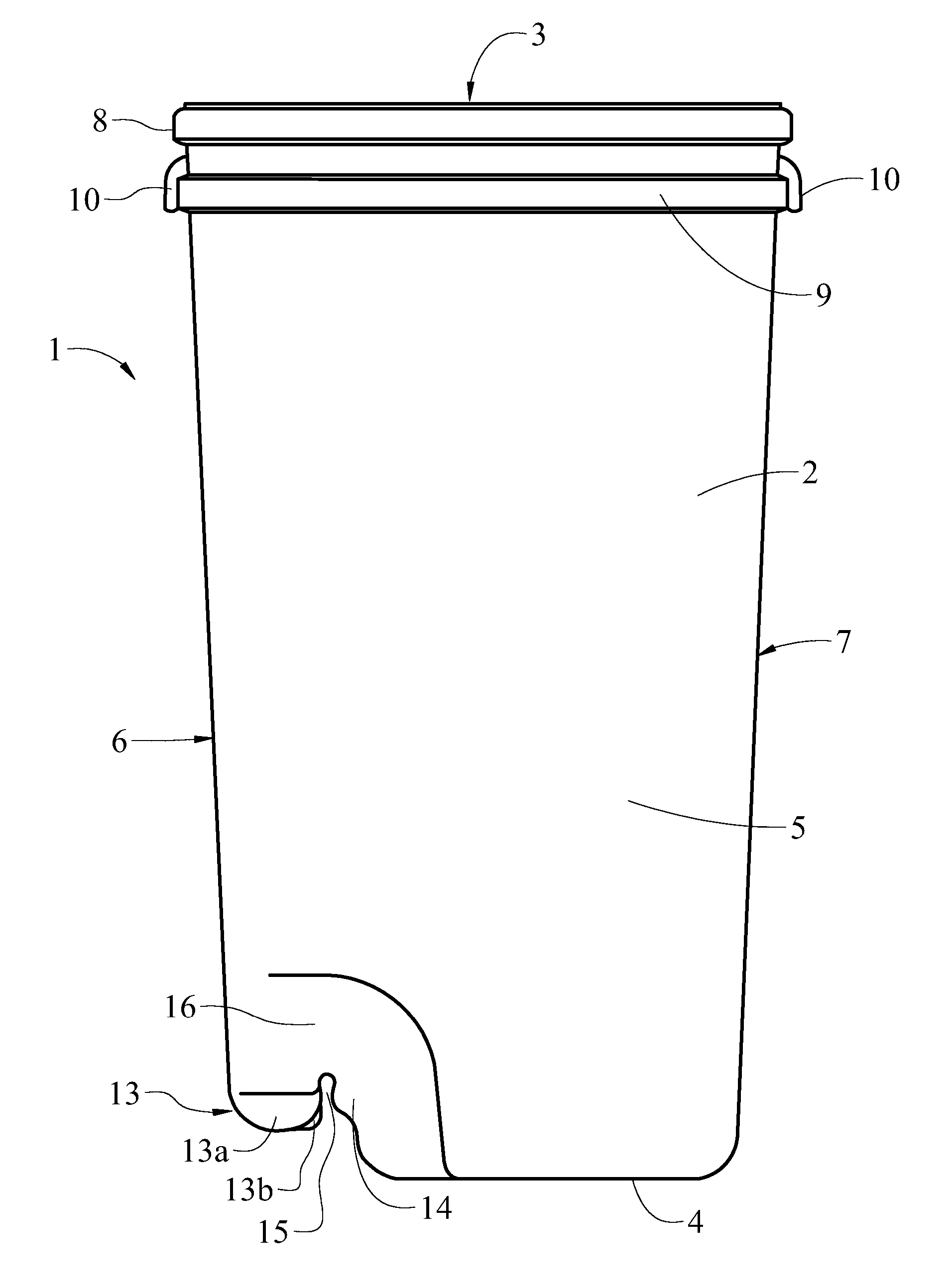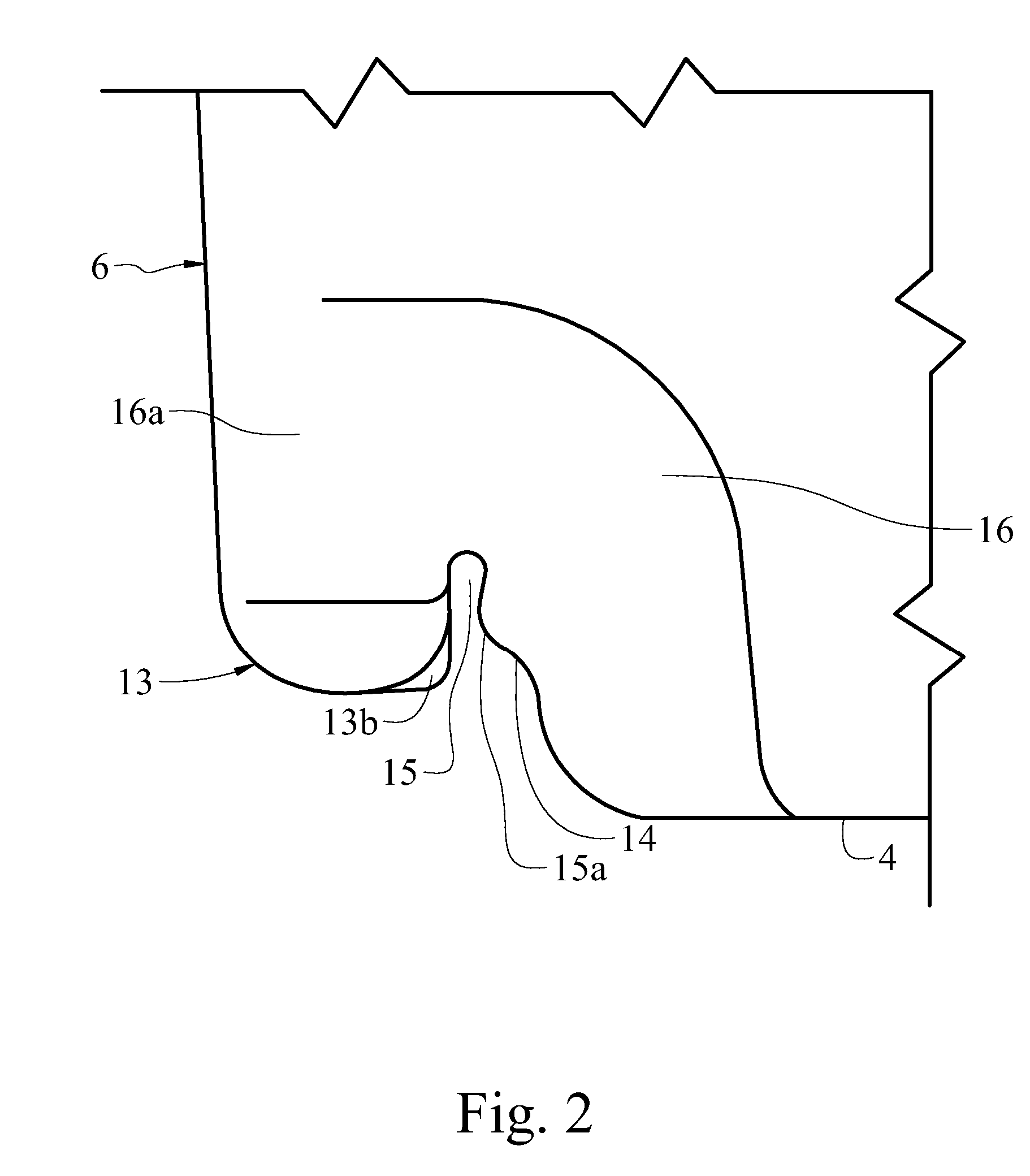Wheeled can for bar refuse
a technology for bar refuse and cans, applied in the field of wheeled cans, can solve the problems of increasing the cost of molds, designing containers, and large volume of refuse containers
- Summary
- Abstract
- Description
- Claims
- Application Information
AI Technical Summary
Benefits of technology
Problems solved by technology
Method used
Image
Examples
Embodiment Construction
[0032] The present art overcomes the prior art limitations by having two ribs at the opening and positioning the axle closer to the center of the bottom of the can. In FIG. 1, the wheeled can 1 begins with a container 2 having an open top 3 and an opposite closed bottom 4 joined by four walls, the front 6 and opposite back 7, and two sidewalls 5. The top has a width and a depth to fit within the gap at the end of a bar. Generally the top is approximately 11 inches wide and 19 inches deep. The bottom is narrower in width and depth than the top. The width and depth of the container taper between the top and the bottom. Proximate to the top, the container has a first rib 8 on the exterior that occupies the perimeter of the container. In the preferred embodiment, the first rib 8 is approximately ¾ inch in height. Mutually parallel and spaced below the first rib 8, a second rib 9 occupies the perimeter. Where the second rib occupies the front 6 and the back 7, the second rib 9 has a hand...
PUM
 Login to View More
Login to View More Abstract
Description
Claims
Application Information
 Login to View More
Login to View More - R&D
- Intellectual Property
- Life Sciences
- Materials
- Tech Scout
- Unparalleled Data Quality
- Higher Quality Content
- 60% Fewer Hallucinations
Browse by: Latest US Patents, China's latest patents, Technical Efficacy Thesaurus, Application Domain, Technology Topic, Popular Technical Reports.
© 2025 PatSnap. All rights reserved.Legal|Privacy policy|Modern Slavery Act Transparency Statement|Sitemap|About US| Contact US: help@patsnap.com



